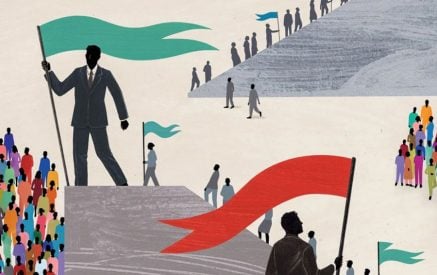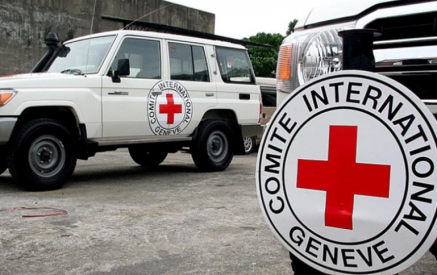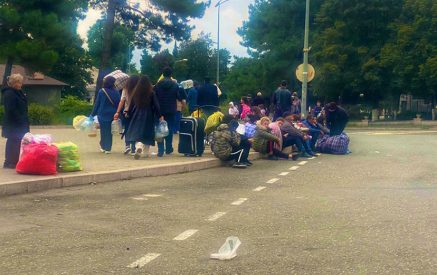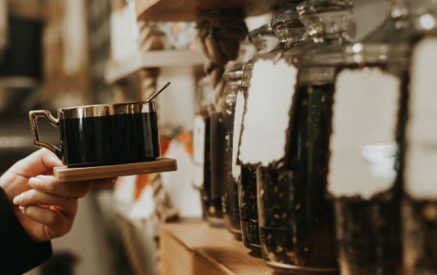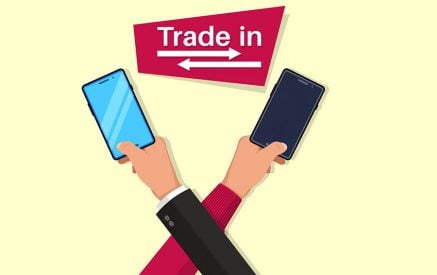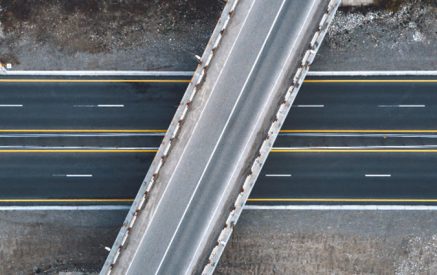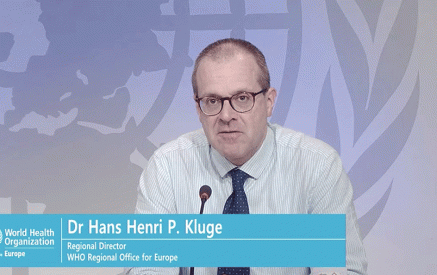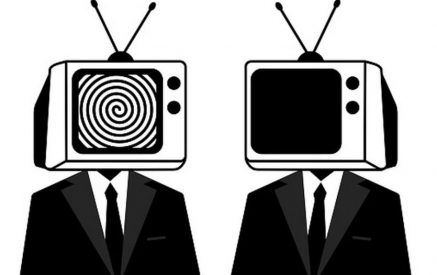The World Health Organization (WHO) declared the COVID-19 (novel coronavirus) outbreak a pandemic on March 11, 2020. The number of new recorded cases continues to rise globally, according to the WHO, although some countries are now witnessing a steady decline in the infection rate, as reported by Business Insider.
Journalists around the world are playing a crucial role in keeping the public informed about the pandemic and governments’ efforts to combat it, despite attempts by authorities in several countries to crack down on independent reporting and access to information, as documented by CPJ. Members of the media are facing a huge amount of pressure and strain, and are often potentially exposed to infection through travel, interviews, and the locations they find themselves working in, according to CPJ’s interviews with journalists. Journalists have faced censorship, detention, physical and online harassment, and the loss of their livelihoods due to COVID-19, as highlighted in recent reporting by CPJ.
As the situation continues to evolve and new information emerges, updated health advice and outbreak news will be issued by the relevant authorities. To keep up-to-date on the latest advice and restrictions, journalists covering the outbreak should monitor information from the WHO and their local public health body.
To keep up to date with the latest outbreak developments, the Johns Hopkins University Coronavirus Resource Center is a safe and reliable resource.
Read also
STAYING SAFE IN THE FIELD
International travel restrictions remain in place and change frequently, meaning the majority of media assignments will likely continue to be domestic-based for the immediate future. All assignments are highly likely to change or be cancelled with little or no notice, due to a fast-moving and rapidly evolving situation throughout the world.
Those who are planning to cover the COVID-19 pandemic should consider the following safety information:
Pre-Assignment
● To minimize the risk of exposure, and wherever possible, phone or online interviews should continue to be carried out rather than in person
● According to the U.S. Centers for Disease Control and Prevention (CDC), older people and individuals with underlying health conditions such as diabetes or obesity are considered higher risk. If you fall into such categories, you should not participate in any assignment that puts you in direct contact with the general public. Consideration should also be given to any employees who are pregnant
● When selecting staff for any reporting on the COVID-19 pandemic, management should be mindful of racist attacks against certain nationalities, as highlighted by the U.N. Secretary General and Human Rights Watch
● Some countries that recently lifted lockdown measures have since re-imposed them, as reported by The Telegraph. You should therefore discuss what plans your management team has in place to assist and support you should you fall ill while on assignment, taking into account the possibility of self-isolation and/or being grounded in a quarantine/lockdown zone for an extended period of time
Psychological Well-Being
● Even the most experienced journalists may struggle psychologically when reporting on the COVID-19 pandemic. Management should check in on their journalists on a regular basis to see how they are coping, and to offer guidance and support if and when necessary
● Family members will likely be concerned and/or stressed if you plan to cover the COVID-19 outbreak. Have a discussion with them about the risks and their concerns. If necessary, set up a conversation between family members and your organization’s medical advisers
● Journalists have told CPJ that when reporting on COVID-19, even family and friends have questioned the dangers, often reacting negatively. This can be dispiriting
● Consider the potential psychological impact of reporting from a location or area affected by COVID-19, especially if reporting from a medical or isolation facility, or quarantine zone. A useful resource for media workers covering traumatic situations can be found via the DART Center for Journalism and Trauma. Visit CPJ’s Emergencies’ page for external safety resources, including mental health best practices for journalists covering COVID-19
Avoiding Infection & Infecting Others
Most countries are practicing social/physical distancing. If reporting on location with the emergency services or visiting high-risk locations such as the following, inquire in advance about the necessary hygiene measures that are in place. If in any doubt, do not visit.
● Any kind of healthcare facility
● A care home for the elderly
● The home of a sick and/or elderly person, someone with health issues, or someone who may be pregnant
● A manufacturing plant where the risk of transmission is high, such as a meat processing factory
● A morgue, mortuary, crematorium, or funeral service
● A quarantine, isolation, or lockdown zone
● A densely packed urban dwelling (i.e. slum or favela)
● A refugee camp
● A prison or detention center with cases of COVID-19
Standard recommendations to avoid infection include:
● Maintain a minimum of at least 2 meters distance with everybody. You should be especially careful around those showing any signs or symptoms of respiratory illness, such as coughing and sneezing, and/or when interviewing the elderly, those with underlying health conditions, anyone close to individuals who are symptomatic, health care workers treating COVID-19 patients, or workers in any high-risk location
● Do not shake hands with, hug, or kiss anyone
● Try to stand at an angle to a subject during an interview rather than face-on, always maintaining the recommended 2 meters or more distance
● Wash your hands regularly, properly, and thoroughly, for at least 20 seconds at a time using hot water and soap. Ensure hands are dried in the appropriate way. A very useful guide on how to wash and dry your hands properly can be found on the WHO website
● Use anti-bacterial gel or wipes if hot water and soap is not available, but always follow this up with a hot water and soap wash as soon as possible. (The CDC recommends the use of alcohol-based hand sanitizers with greater than 60% ethanol or 70% isopropanol.) Do not substitute a regular hand washing routine by using hand sanitizer in its place
● Always cover your mouth and nose when coughing and sneezing. If you cough or sneeze into a tissue, dispose of it immediately in a safe and appropriate manner, and remember to thoroughly wash your hands afterwards
● Avoid touching your face, nose, mouth, ears, etc., as highlighted by the BBC
● Avoid drinking/eating from cups, crockery, or cutlery that may have come into contact with other people
● All hair should be covered. Long hair should be tied up and tucked away
● Remove all jewelry and watches before any assignment, noting that the COVID-19 virus can remain live on many different surface types for varying lengths of time
● If you wear glasses, carefully clean them on a regular basis with hot water and soap.
● Avoid wearing contact lenses on assignment, if possible, due to the likelihood of touching your eyes and increasing your chances of infection
● Consider what clothing you will wear, taking into account that certain fabrics can be wiped clean easier than others. All clothing should be washed at a high temperature with detergent after any assignment
● If possible, try and avoid using cash on assignment, and ensure you clean your credit/debit cards, wallet, and/or purse on a regular basis. Avoid putting your hands into your pockets as much as possible
● Always try to interview people in an outside space. If you do need to interview indoors, select a location with some kind of airflow (e.g. open windows) and avoid small confined rooms or spaces
● Consider your mode of transportation to and from the assignment. Avoid traveling on public transportation during peak travel periods, and make sure to use alcohol-based sanitizer on hands when disembarking
● If traveling in a personal or company vehicle, be aware that an infected passenger could pass the virus onto the others inside the vehicle, as highlighted by the BBC in India. Travel with the windows down to ensure good airflow throughout the vehicle, and consider the use of face coverings or face masks while in the vehicle
● Take regular breaks and be mindful of fatigue/energy levels, taking into account that tired individuals are more likely to make mistakes with their hygiene regime. Also factor in that individuals may have long distances to drive before and after work
● Always ensure your hands are washed thoroughly with hot water and soap before, during, and after leaving an affected area
● If you develop symptoms, especially fever or shortness of breath, consider how you will seek medical treatment. Most government health bodies now recommend self-quarantine to prevent the infection of others. If you are in a heavily infected area you will likely encounter other COVID-19 infected patients at crowded treatment centers, therefore increasing your chances of exposure
● Only consume cooked meat and eggs
Equipment Safety
The potential to spread COVID-19 via contaminated equipment is real. A strict cleaning and disinfecting regime should be implemented and adhered to at all times:
● Use directional ‘fishpole’ microphones from a safe distance instead of clip mics
● Microphone covers should be disinfected and washed at a high temperature with detergent at the end of every assignment. Seek guidance/training on how to safely remove the cover to prevent any potential cross contamination. Try and avoid the ‘wind muff’ type covers if possible, which are harder to clean
● Use low cost earpieces wherever possible and treat them as disposable, particularly for guests. Wipe down and disinfect all earpieces before and after use
● Use long sight lenses to help maintain a safe distance on location
● Wherever possible, use mobile equipment rather than those with cables
● Consider how you will store your equipment on assignment. Don’t leave anything lying around and put everything back in its case and close it (i.e. some kind of hard sided flight case, which is much easier to wipe down and keep clean)
● If possible and practical, put some kind of plastic wrapping/protection around equipment when using it. This will minimize the surface area of the equipment that could become contaminated, and will be easier to clean and disinfect
● Carry fully charged spare batteries with you and avoid charging anything on site, as this is an additional item that could become contaminated
● Always decontaminate all equipment with fast-acting antimicrobial wipes such as Meliseptol, followed by thorough cleaning, including but not limited to cell phones, tablets, leads, plugs, earphones, laptops, hard drives, cameras, press passes, and lanyards
● Ensure all equipment is decontaminated again when returning it to base, making sure that those responsible for the equipment are made fully aware in advance and that they are trained in how to safely clean the equipment. Make sure that no equipment is just dumped and left lying around without being signed back in to the person responsible for cleaning
● If using a vehicle for the assignment, ensure that the interior is given a thorough deep clean after any assignment, ideally by somebody who is properly trained. Particular attention should be paid to the door handles, steering wheel, gear stick, hand brake lever, wing mirrors, head rests, seat belts, dashboard, and window winders/catches/buttons
Cleaning Electrical Equipment
The following points offer some general guidance regarding the cleaning of electrical equipment. Always ensure you have read the manufacturers guidelines before attempting any cleaning.
● Always unplug/remove all power sources, devices, and cables
● Keep any liquids away from your equipment, and do not use aerosol sprays, bleaches, and abrasives–these will almost certainly damage your equipment
● Never spray any substance directly onto your device
● Only use a nonabrasive, soft, lint-free cloth
● Make the cloth damp or moist, but NOT wet. Add some soap to the cloth and rub it into the cloth with your hand
● Thoroughly wipe the device down several times
● Do not allow any moisture to get into any openings (such as charging sockets, earphone sockets, keyboards)
● Dry your device with a clean, dry, and soft cloth
● Certain manufacturers recommend 70% isopropyl alcohol wipes for any hard and nonporous surfaces
● If disinfecting your equipment always check with the manufacturer first, as disinfectants could damage your device
More detailed guidance can be seen via this article.
Medical Personal Protective Equipment (PPE)
Safely putting on (donning) and taking off (doffing) any medical PPE (such as disposable gloves, face masks, protective aprons/overalls/bodysuits, and disposable shoe covers etc.) requires the strict observance of and adherence to best safety practices. Please click here for general guidance from the CDC. Particular care should be taken when removing (doffing) PPE, as this is when the risk of cross contamination is highest, so do not be complacent about these measures. If in any doubt, seek expert guidance and training before going on any assignment.
Please note that in some countries medical PPE is in short supply and is therefore difficult to source, so using such equipment can create shortages.
● Ensure any PPE used is the correct size for you. Badly fitting PPE is liable to tear and/or restrict movement (if too tight), and may catch on objects like door handles and tear (if too loose)
● Always use reputable brands of medical PPE, paying attention to the minimum required safety specifications. Be aware of faulty items, as highlighted by CNN, as well as counterfeit products, as highlighted by Securing Industry. Some of the leading and most respected brands can be seen here
● Use protective gloves if working in or visiting an infected site such as a medical treatment facility. Note that nitrile gloves offer a higher degree of protection than latex. Wearing two pairs improves safety
● If reporting from a high risk location such as a medical treatment facility, additional medical PPE such as a full bodysuit and full face mask will almost certainly be required
● If wearing full body coveralls, ensure you use the restroom in advance of donning the PPE
● Depending on the assignment, you may need to wear disposable footwear or use waterproof overshoes, both of which must be wiped/rinsed off as soon as you exit an affected location. If using waterproof overshoes, they should be disposed of in a safe manner before leaving the location
● It is recommended that all medical PPE is donned/doffed under the supervision of a trained professional, taking into account that this may be the moment of exposure. This donning and this doffing video from the CDC may be helpful, although should not be used as a replacement for training/supervision
● Never reuse gloves, bodysuits, aprons, or shoe covers. Any equipment that is to be reused needs to be properly decontaminated and sanitized. Ensure all contaminated medical PPE is disposed of in the appropriate manner BEFORE leaving an affected site
Face Masks
Many countries now require and/or are advising the use of face coverings and/or face masks by the general public, as reported by Al-Jazeera. The CDC recommends that people wear multiple-layer cloth face coverings—but not medical grade masks, which are in short supply—to cover their nose and mouth in a community setting. The WHO advises that those aged 60 or older, as well as anybody with an underlying health condition(s), wear a medical-grade mask when they are out and cannot physically distance. They advise that all other people wear a three-layer fabric mask.
Unless used correctly, there are concerns that masks can actually become a source of infection. A recent study by the Lancet shows a detectable level of infectious virus still present on a surgical mask up to seven days after exposure. Based on this study, taking off or reusing a mask, or touching your face when wearing one, could mean risking infection.
If you do wear a mask you should follow the following advice:
● If necessary, an N95 mask (or FFP3) is recommended instead of a standard ‘surgical’ mask
● Ensure that the mask fits securely over the bridge of the nose and chin, minimizing gaps in the fit. Ensure any facial hair is kept to an absolute minimum to ensure a good tight seal to the face. Be aware that thick facial hair will prevent this from happening
● Strict adherence to face mask safety is essential. Avoid touching the front of the mask, only ever remove it by the straps, and avoid adjusting the mask once on unless absolutely necessary. Wash hands immediately if they come into contact with the mask.
● Reusing masks is high risk. Always dispose of used masks immediately into a sealed bag
● Always wash hands with soap and hot water after removing the mask. If not possible, use an alcohol-based hand sanitizer (greater than 60% ethanol or 70% isopropanol) but follow this up as soon as possible with a hot water and soap wash
● Replace the mask with a new, clean, dry mask as soon as it becomes damp/humid
● Remember that the use of a mask is only one part of personal protection, which must be accompanied by regularly washing your hands with hot water and soap and avoiding touching your facial area, including your eyes, mouth, ears, and nose
● Be aware that face masks may be in short supply and/or subject to sharp price increases, depending on the location
Digital Security
● Be aware that journalists may face increased levels of online hostility in relation to their reporting on the COVID-19 outbreak. Review CPJ’s best practices for protecting yourself against attacks
● Governments and tech companies are increasingly using surveillance as a way to track the spread of COVID-19. This includes the NSO Group, which created Pegasus, a spyware that has been used to target journalists, according to Citizen Lab. Civil liberties groups are becoming concerned about how these surveillance techniques will be used to target people after this health crisis is over. Transparency International is tracking these global developments on their website
● Pause and think before you click on links or download documents containing information about COVID-19. Criminals are leveraging the current health crisis and panic to target individuals and organizations with sophisticated phishing attacks that could lead to malware being installed on your devices, according to the Electronic Frontier Foundation
● Exercise caution when clicking on any COVID-19 related links on social media or in messaging apps, some of which may direct you to sites that infect devices with malware
● Be aware of malicious apps that target individuals for ransomware, such as COVID-19 Tracker
● Maps showing up-to-date information on COVID-19 from reputable sources, such as the WHO, are reported to contain malware that could be used to steal passwords
● Be conscious of state-sponsored misinformation, as reported by The Guardian, as well as general misinformation, something that the WHO has specifically warned about and that the BBC has highlighted. A myth buster guide is available on the WHO website
● Be cautious of information about COVID-19 shared through chats on messaging apps, which may contain fake news and hoaxes
● Be aware that COVID-19 content on Facebook is now being moderated by artificial intelligence (AI) instead of human content checkers, which has led to legitimate content about the disease being removed in error
● Read up on online conferencing and privacy issues so you are aware of what these services are doing with your data, what they have access to, and how secure they are. Be aware that with an increasing number of people working from home, services have been targeted by hackers
● Be alert to the risks posed by reporting on and/or from countries with authoritarian regimes, which will likely be closely monitoring coverage of the COVID-19 outbreak. Certain governments may try to conceal the extent of any outbreak and/or censor the media accordingly, as highlighted by CPJ
Crime & Physical Security on Assignment
Journalists and media workers should be aware of increasing levels of anti-press sentiment and hostility toward them, including verbal harassment and physical assault while on assignment, as seen in the U.S., according to the U.S. Press Freedom Tracker, and Germany.
The global economic situation looks bleak, with people losing their jobs and up to half a billion people potentially falling into poverty, according to Oxfam. The likelihood of an increase in criminal activity is real.
● If you can travel for an international assignment (see below), research the latest security situation in your destination. While the scale of unrest has decreased, there have been violent incidents and protests around the world since late February. Be aware that unrest could flare up again if lockdowns are re-imposed due to a second wave.
● Many urban areas are much quieter than usual and police resources are stretched. There is a risk that criminals may take advantage of this situation. Some journalists report having been verbally harassed and criminally targeted, as well as assaulted, so do not take safety for granted
● Be particularly careful if reporting from rural areas. People may be suspicious and/or angry toward ‘outsiders’ for fear that you could be bringing COVID-19 with you
● Be aware of a potentially heavy-handed response from the police relating to COVID-19 lockdown measures, such as physical assault and the use of live ammunition, tear gas, and rubber bullets
● If reporting from a prison or detention center, journalists should be alert to the dangers posed by inmates protesting and/or rioting regarding the COVID-19 outbreak, as seen previously in Sierra Leone, Italy, Nigeria, Colombia, and India
● Be aware of a potential increase in crime levels, noting that countries such as Iraq, the U.S., Ireland, Indonesia, Ethiopia, Palestine, Somaliland, and Iran have released inmates to ease the prison population during the COVID-19 outbreak
● Be aware of the chances of looting and robbery, especially if lockdown measures are re-imposed and/or unemployment levels increase
● Journalists in countries with an authoritarian regime should be alert to the threat of detention, arrest, and/or deportation when reporting on the COVID-19 outbreak, as highlighted by CPJ
International Travel Assignments
Due to global restrictions, international travel remains challenging. If an overseas assignment is possible you should consider the following:
● Be aware that lockdown measures and/or curfews may vary throughout different parts of a country—as seen in the U.K. and the U.S. Note that local lockdown measures could be imposed with little or no notice
● Identify all medical treatment facilities in the area you’ll be operating in. Note that healthcare workers may strike or protests with little or no notice, as seen in countries including Brazil, India, and Papua New Guinea
● Access to medical PPE may be limited and/or nonexistent. Always research availability in advance of any assignment, and take supplies with you if necessary
● Ensure all relevant vaccinations and disease prophylaxis are up-to-date for your destination in good time. Consider getting the flu vaccine to prevent confusion over any symptoms you may develop
● Check your travel insurance policy, noting that obtaining cover for COVID-19 related travel may not be possible. Be aware that many governments have issued varying levels of travel advice and alerts against international travel
● Regularly check the status of any event you plan on attending, taking into account that many countries have banned public gatherings altogether, or gatherings above a certain number of people
● Check on any existing and/or upcoming travel bans for your intended destination, which could change at short notice
● Ensure you have a contingency plan in place, taking into account that urban centers, specific regions, and/or entire countries can be locked down and quarantined with little or no notice
● Many land borders remain closed around the world. Any borders that do reopen could close again with no warning, something that should be factored into your contingency planning
● Do not travel if you are sick. Most international and regional airports, as well as other transportation hubs, have implemented strict health screening measures. Travelers will almost certainly face testing and/or enforced quarantine/self-isolation on arrival
● Global travel options are still limited due to airlines cancelling flights to/from many destinations.
● Note that COVID-19 is causing significant financial distress for many airlines, according to news reports, so consider purchasing fully refundable flight tickets.
● Consider what supplies you may need to take with you. Although examples of panic buying appear to have abated, future shortages of face masks, hand sanitizers, soap, canned food, and toilet paper cannot be ruled out and should be considered. Note that strike action and/or a shortage of workers due to COVID-19 infections could exacerbate the situation in your destination
● Be aware that countries with limited water supplies, such as Jordan, may start to experience increased demand and shortages as lockdown measures continue and summer temperatures creep up
● Check on the latest visa situation for your destination, noting that numerous countries have stopped issuing visas and suspended visas that have already been issued for travel
● Check if your destination country requires a medical certificate to prove you are COVID-19 free. Some examples can be seen here
● Maintain flexible itineraries and allow additional time at airports around the world, taking into account health screening measures and temperature check points. The same applies at some railway stations, ports/docks, and long-haul bus stations
● Keep up to date with any changes to your point of arrival, noting that certain countries will only allow foreign nationals to enter at certain airports and terminals
● Continually monitor local sources for news of any inner-city movement restrictions within the country you’re visiting
Post-Assignment
● Continually monitor your health for any signs of symptoms
● You will likely need to self-isolate as a matter of course after any high-risk assignment. Please check the relevant government advice for clarity
● Monitor the latest updates and information on COVID-19, as well as any quarantine and isolation procedures being implemented at both your origin and your destination
● Depending on the rate of infection in the country you are in, you should consider keeping a journal with names/numbers of individuals you come into close proximity with for 14 days after your return. This will help with possible contact tracing should you start showing symptoms
–If you develop symptoms
● If you develop or have symptoms of COVID-19, however mild, inform your management team. Work with them to take appropriate transportation from the endpoint of your assignment to your home. Do not simply get in a taxi
● Follow the advice of the WHO, the CDC, or local health authorities to protect yourself and your community
● Do not leave your home for at least 7 days from when your symptoms started. Doing so will help protect others in your community while you are infectious
● Plan ahead and ask others for help. Ask your employer, friends, and family to get the supplies you need for you, and to leave them outside your front door
● Stay at least 2 meters away from other people in your home whenever possible
● Sleep alone, if possible
● If you share accommodation with others, a 14-day isolation period for all should be observed. A useful guide to this can be found here. Particular care needs to be taken when using the bathroom, toilet and kitchen facilities, so to avoid cross contamination
● Wash your hands regularly and thoroughly for at least 20 seconds, using soap and hot water
● Stay away from vulnerable individuals, such as the elderly and those with underlying health conditions, as much as possible
● You do not need to call the health authorities in your country to go into self-isolation, unless your symptoms noticeably worsen during the isolation period
CPJ’s online Safety Kit provides journalists and newsrooms with basic safety information on physical, digital, and psychological safety resources and tools, including on covering civil unrest and elections.
[Editors’ note: This advisory was originally published on February 10, 2020, and is being frequently revised. The publication date at the top reflects the most recent update.]
CPJ Emergencies
Photo: Mexican journalists, wearing personal protective equipment amid the COVID-19 pandemic, cover a protest by administrative workers at the General Balbuena Hospital in Mexico City on April 16, 2020. (AFP/Pedro Pardo)







